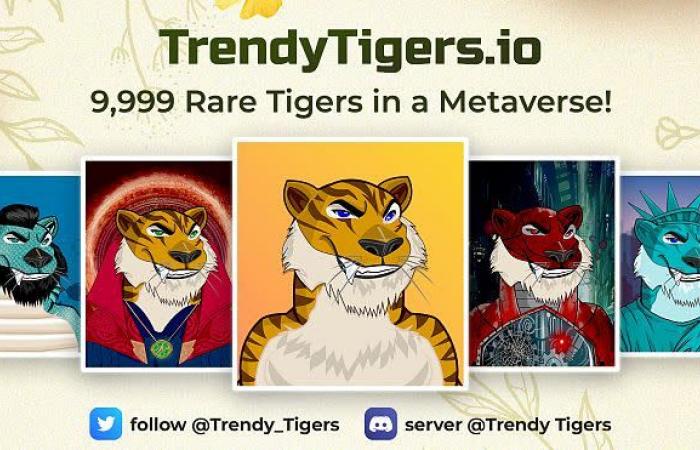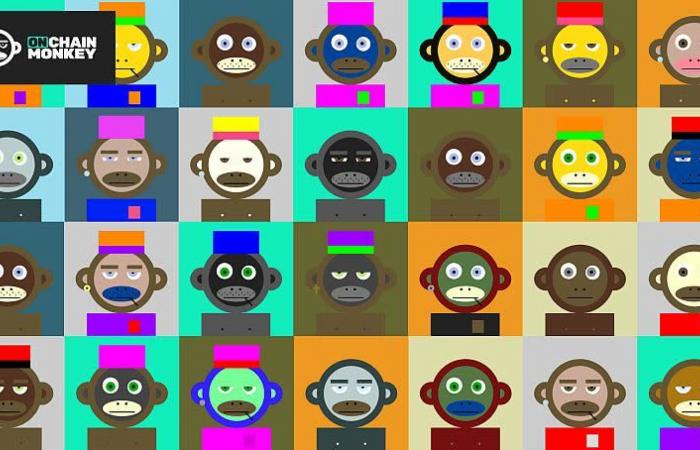Last month, former US President Donald Trump announced that he was releasing a new collection of his digital trading cards. The cards, launched through his Truth Social platform, cost $99 (90 euros) each and if you buy 15 or more you will receive a physical card with a piece of the suit the billionaire wore during his debate with Joe Biden in June last.
This is not the first time that Donald Trump has sold this type of product.
His original 2022 collection was sold within hours for a total of $4.5 million (€4.1 million). This is also not the first time that the candidate for the 2024 presidential election has subjected his loyal supporters to a business ploy.
At the beginning of the year, the ex-president promoted his bible “God Bless the U.S.A” (link in English), worth $60, believed to be the only King James Bible to have been approved by the former president. He also used the high-profile photo of him in the Fulton County Jail to sell coffee mugs, T-shirts and other trading cards.
Clearly, these are money-making tactics for a defeated 2016 presidential candidate who is potentially more penniless than his bravado billionaire persona would suggest.
However, while the promise of a non-fungible token (NFT) trading card collection might have made sense in 2022, it’s unclear whether the latest collection will sell with the same immediacy as its previous attempt.
The Republican candidate boasts of being a “crypto-president,” but while NFTs were the cornerstone of investor conversations in 2022, two years later the subject has been quietly abandoned.
“NFTs boomed and busted in 2022 when people were stuck at home during Covid”explains to euronews Dr John Hawkins, lecturer at the Canberra School of Politics, Economics & Society at the University of Canberra.
“Their value has not recovered,” he adds. If we consider the “market capitalization” of all NFTs, the maximum value approached trillions of dollars in 2022. It is now close to zero.”
The rise in the NFT market between 2021 and 2022 reached its peak in August 2021, when a week of transactions reached $3.24 billion (€2.96 billion). According to blockchain data, the most recent week, from September 29 to October 6, recorded only $67.93 million (€62.03 million) in transactions. This is just over 2% of the figure from three years ago.
Take the most popular example of the NFT, the Bored Ape, which was promoted by stars as diverse as Eminem, Post Malone, Madonna and Paris Hilton, and sales fell exactly like the general trend.


At the time, Bored Ape’s NFTs were touted as intriguing investments in digital art that could prove incredibly lucrative. Touted by stars who could afford to make the occasional unsuccessful investment, these same stars quickly kept quiet about their shiny new NFTs.
It is the rest of the public, attracted by the promise of easy wealth, which caused the dizzying fall of these NFTs. With the collapse in value of Bored Apes and other NFTs, what little hope of being saved has been dashed by now cautious buyers.
“There are a lot of buyers who got screwed the first time and who might be very reluctant to try their luck again.”explains Mr. Hawkins. “The bitcoin price has recovered from previous crashes, so it’s not impossible, I suppose.”
Bitcoin and other major cryptocurrencies have seen massive market swings, but as bitcoin continues to skyrocket to increasingly exorbitant values – and will likely make some techies filthy rich – it remains to be seen whether this trend will happen again with NFTs.
Last year, dappGambl, a crypto gambling expertise site, published a study indicating that 95% of all NFTs are now worthless investments. This is not only because so many of them are worthless, but also because it is rare that they are still purchased – 79% of them remain unsold.
Why haven’t NFTs had the same longevity as cryptocurrencies like bitcoin? This is probably due to the same criticism they received during their brief period of craze. While bitcoin has functional utility as an alternative currency, NFTs were ultimately ways for crooked people to show that they owned digital images.
Digital images are naturally easy to reproduce and share. The pride of owning the “original” is completely futile. Its value is only inherent in the value you place on the pride of owning it. There’s a reason it seems circular. It is.
If some artists have made NFT artworks – like the controversial work of Damien Hirst “The Currency” – for the most part, NFTs were juvenile, non-artistic graphics invested in by people hoping they would work as a get-rich-quick scheme.
The rise of bitcoin was due to the market’s belief that it would become a legitimate market tool. NFTs are just exchanges of works of art for people who recognize neither the value of art nor the indivisibility of the canvas.
All of this is to say that Trump’s latest desperate attempt to grab the money is unlikely to portend a rebound for NFTs. However, that doesn’t mean they won’t be financially lucrative for him, says John Hawkins.
“Trump’s cards are different in that they are promoted by someone who has a huge fan base and media access”he explains. On the other hand, “ultimately it is a speculative asset with no underlying value that generates no cash flow”.
On the other hand, “if Trump wins, the chances of their price going up are much higher than if he loses”reminds the professor.








